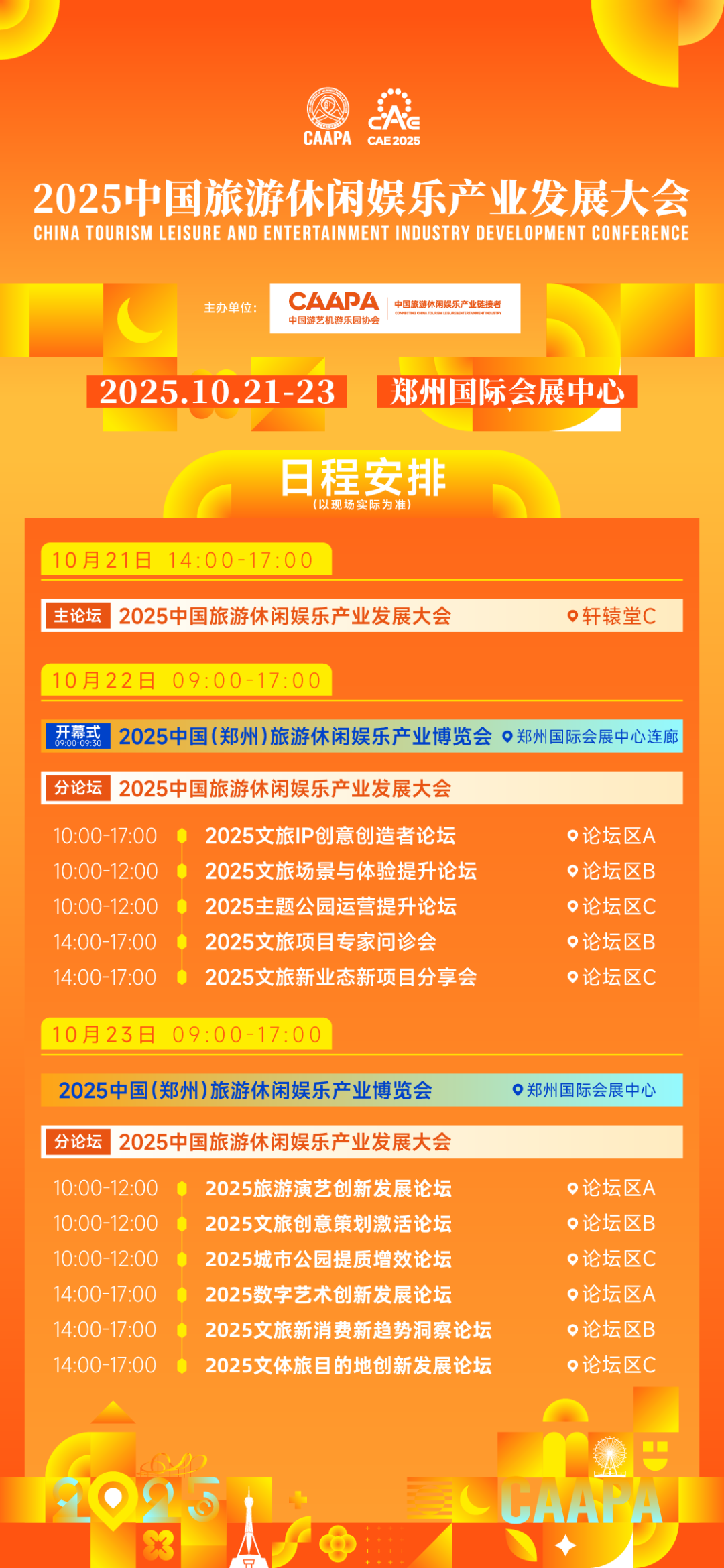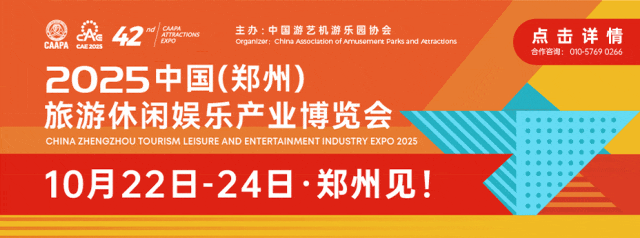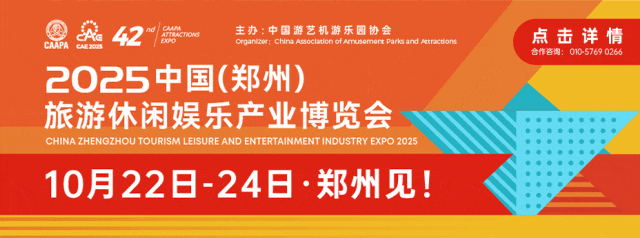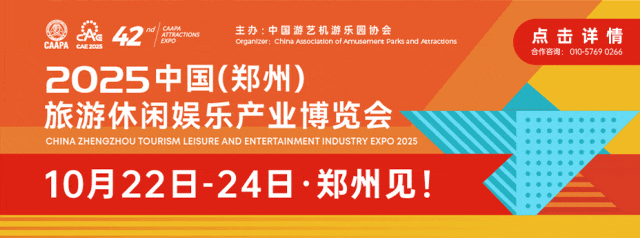
If cultural tourism all operates with light assets, people can only manage air.
Source:
Author:
Release time:
2025-08-23
Click to view details
Come here ↓ to discover new trends in cultural tourism
2025 China Tourism Leisure and Entertainment Industry Development Conference
Join over 1000 leading cultural tourism enterprises to share the grand event and opportunities
See you in Zhengzhou, October 21-23!

▲
Author | Agricultural Tourism Formula
Editor-in-Chief | Yang Ming
Editor | Jing Xiangyuan
Saving money, saving trouble, and appearing flexible, it seems like the ultimate weapon to solve the current difficulties in cultural tourism profitability and slow returns.
But is reality really like this?
If you look closely, you will find many projects in the market labeled as "light assets," but they end up with "light operation, light results, light survival."
Some places hired so-called light asset operators, and after a year, except for PPTs, two posters, and three events, they didn't leave any decent spatial nodes. The cultural tourism project was lively for a while and then dispersed. No tourists stayed, no consumption grew, and the local reputation was damaged.
Light assets have become the easiest story to tell but the hardest illusion to realize.

Who is promoting light assets?
Some companies, holding a few design drawings and a set of "IP + content + operation" packages, can claim to be "urban renewal experts," "cultural tourism incubation platforms," or "rural operation agencies."
However, for local governments, these projects have low initial investment, quick approval, and low financial risk, appearing cost-effective and a safe option to avoid "heavy investment in the wrong direction."
But those who truly achieve "light assets, high returns" are extremely rare. Most end up falling into the huge trap of "light investment, light effort, light departure."
The real problem is not light, but emptiness.
Light assets are not wrong in themselves. The real problem is that many "light asset" cultural tourism projects have not established solid spatial foundations and industrial bases. They are not truly "light," but "empty." Where is the emptiness?
The emptiness lies in the lack of rooted physical scenes.
The essence of cultural tourism is not piling up copywriting and photos online, but landing in real scenes, spaces, streets, villages, and courtyards.
How can users enter a project without an experience entrance or spatial carrier? What do you use to carry the content?
Relying on an event to attract tourists, but even the toilets are borrowed from the neighboring elementary school — this is not light assets, this is "no assets."
The emptiness lies in the lack of sustainable cash flow logic.
Many light asset projects disappear after a few events or barely survive on subsidies and sponsorships.
Without accommodation, retail, or consumable nodes, how can the project survive?
The emptiness lies in the lack of long-term team accumulation.
Many so-called operators only handle early-stage plans and a few event executions, lacking permanent teams, daily management, and do not promote local employment, organize volunteers, or build communities.
Their resources, talents, and capabilities do not settle on site, so they naturally cannot generate real operational value.
Truly effective "light assets" have "heavy" thinking.
Most successful "light asset cultural tourism" projects are not lightly thought out or lightly planned, but use every bit of "light" on the critical points. For example:
Beijing Fang invests heavily in building historical architectural clusters and public spaces, relying on resource integration and brand premium to create flagship IPs, cultural activities, and community sharing. The logic of "light" and "heavy" is clear and symbiotic, maximizing capital leverage in urban renewal;
The hidden asset behind Nanjing Sifang Contemporary Art Museum is decades of deep accumulation in art collection and exhibition experience;
Lijiang's Huajiantang operates light homestays and light brands, but its supply chain, service standards, and membership system are all based on heavy asset thinking.
In other words, light assets do not mean no investment, but only investing in key areas: resources, culture, and operation systems. These assets are invisible but the most valuable.
Local areas need more "grounded cultural tourism" rather than "walk-through plans."
Many places do not lack good cultural tourism ideas, but the biggest fear is that projects look beautiful only in PPTs but are a mess on site.
Light assets easily turn projects into "walk-through plans": less than a week of preliminary research, staff coming and going, no systematic implementation, and no sample left for review.
What local areas really need are people willing to deeply root on the front line, who can lead local industry transformation, and who understand resource integration and talent cultivation.
If light assets cannot achieve these, it should not become the mainstream model.
The essence of "cultural tourism" is the connection between people and place. If you do not build an effective space that can carry emotions, time, and relationships, and only sell cultural stories or urban-rural IPs online, it is essentially "copywriting output," not "cultural tourism operation."
Light is a trend, but it cannot be all light. A truly solid cultural tourism model is heavy within light, a systematic project that can be implemented, grow, and leave real experiences and industrial value.
Stop fooling people with "light assets," and stop coping with "low investment." If all cultural tourism is done with light assets, people will only be operating air.
(The article only expresses the author's views and does not represent the platform's position)
Come here ↓ to discover new trends in cultural tourism
2025 China Tourism Leisure and Entertainment Industry Development Conference
Join over 1000 leading cultural tourism enterprises to share the grand event
See you in Zhengzhou, October 21-23!

Key words:













